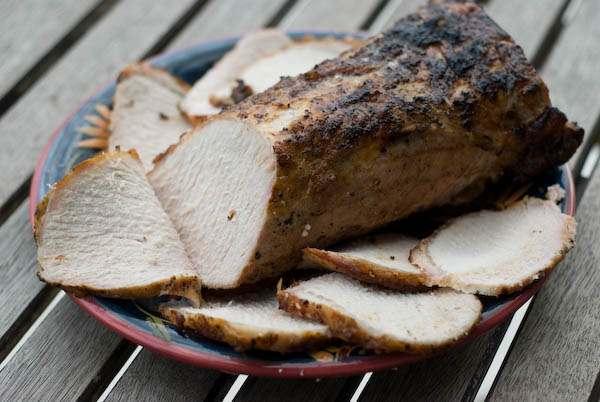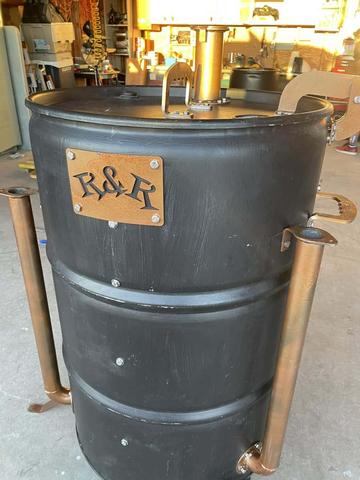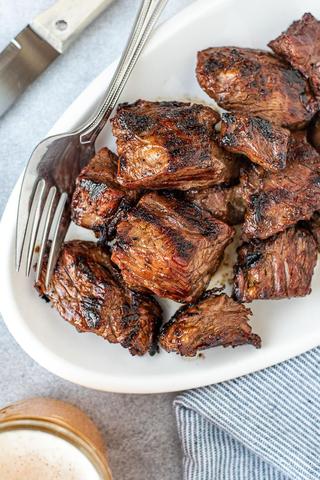
“Pork Loin Brine: Elevating Flavor and Juiciness. Discover the secret to succulent and flavorful pork loin with our expertly crafted brining technique. Immerse your cuts in a tantalizing blend of spices and seasonings, enhancing tenderness while locking in moisture. Elevate your culinary creations with this simple yet game-changing process. Unleash the full potential of pork loin, leaving your taste buds craving more.”
Brined and Grilled Pork Loin Roast

If you have never brined your meats before cooking, you don’t know what juicy and tender is all about! Brining is the trick many professional cooks use to produce tender and juicy meats. One cook shares their experience of trying brining with a Thanksgiving turkey and feeling like they needed to apologize for past turkeys. They decided to try brining a pork loin roast on the grill, as lean meats have a tendency to dry out if not cooked properly. The result was an awesome, juicy, and tender hunk of meat.
Brining is similar to marinating but actually hydrates the meat by packing the cells full of moisture. The most common component of brining is salt, with brown sugar often used to offset some of the saltiness. Once you have these main components, you can add any herb you want. After brining the pork loin roast for 12-24 hours, it is ready to be cooked on the grill over indirect heat at around 300 degrees Fahrenheit. After about an hour, it should reach a safe internal temperature and can be removed from the grill to rest before carving.
Ingredients
– 4-5 pound pork loin roast with fat layer on top
– Brine solution: brown sugar, salt, water, and any desired herbs
– Smoke pouches for grilling
– Aluminum drip pan (optional)
– Seasonings such as dijon mustard and herbs (optional)
Instructions
1. Combine the brown sugar and salt in water and bring to a boil. Stir until dissolved, then add the rest of the brine ingredients. Allow the solution to cool completely to room temperature.
2. Once cooled, place the pork loin roast and brine solution in a Ziplock bag, removing as much air as possible before sealing. Place the bag in a pot or large bowl in case of any leaks, and refrigerate for at least 12 hours, up to 24 hours.
3. Preheat your gas grill and remove the pork roast from the refrigerator about 45 minutes prior to cooking. Rinse and pat dry.
4. Add smoke pouches to the sides of the grill to start smoldering. Sear the pork loin roast on all sides to create grill marks.
5. Turn off the middle burner(s) on your grill for indirect grilling. Elevate the pork roast with a rack or by fitting an aluminum drip pan underneath if possible.
6. Place the seared pork loin on a grate or rack, fat side up, on your grill heated to around 300 degrees Fahrenheit.
7. Close the lid and monitor the temperature with a meat thermometer placed next to the pork loin for about an hour.
8. After an hour, check the internal temperature of thickest part of the roast with a meat thermometer and adjust burners if needed.
9. Continue grilling until desired internal temperature is reached (145-160 degrees Fahrenheit), adding more smoke pouches if necessary.
10. Remove from grill, cover with aluminum foil, and let rest for about 15 minutes before carving.
Note: The instructions provided are based on information from the topic and may be subject to personal preferences and cooking equipment.
How to Cook a Pork Loin Roast on a Gas Grill:
Before cooking the pork loin roast on a gas grill, it is important to prepare the meat by brining it. Brining helps to make the roast juicy and tender. To brine the pork loin roast, combine brown sugar and salt in water and bring it to a boil. Stir until dissolved and then add the rest of the brine ingredients. Allow the solution to cool completely before adding the pork loin roast to a Ziplock bag with the brine solution. Seal the bag, removing as much air as possible, and place it in a pot or large bowl in case of any leaks. Refrigerate for at least 12 hours, up to 24 hours.
Once the pork loin roast has been brined, it’s time to cook it on the gas grill. Start by removing the roast from the refrigerator and allowing it to come to room temperature for about 45 minutes. Rinse and pat dry before preheating the grill and adding smoke pouches for extra flavor. Sear all sides of the roast over direct heat, creating grill marks. Then, turn off the middle burner(s) on your grill for indirect grilling.
Elevate the pork loin roast on a grate or rack with a drip pan underneath if possible. Close the lid of the grill and monitor the temperature using a meat thermometer placed next to the roast. Aim for a temperature of around 300 degrees Fahrenheit. Keep an eye on smoke pouches and add more if needed during cooking.
Nutrition
Brining meats can enhance their flavor and tenderness, but it is important to consider the nutritional aspects as well. The brining solution typically contains salt, brown sugar, water, and various herbs. While brining does add moisture to the meat, it also increases the sodium content due to the use of salt. Therefore, individuals on a low-sodium diet may need to limit their consumption of brined meats.
Pork loin itself is a lean cut of meat and is a good source of protein. When cooked properly, it can be a healthy option for a meal. However, it is important to note that the addition of sugar in the brine can increase the calorie content. It is recommended to monitor portion sizes and balance it with other nutritious foods such as vegetables or whole grains.
In conclusion, brining pork loin is a simple yet effective technique to enhance its flavor, tenderness, and juiciness. The saltwater solution infuses the meat with moisture and seasoning, resulting in a delicious and succulent dish. By following proper brining guidelines, you can elevate your pork loin dishes to new levels of culinary excellence.
Learn More About Grilling
If you want to learn more about grilling, check out these other helpful resources!










